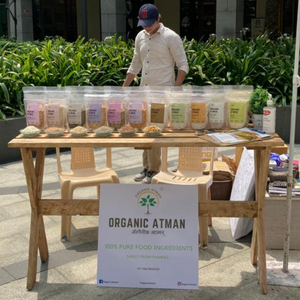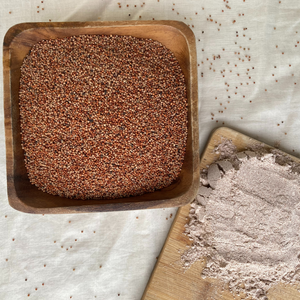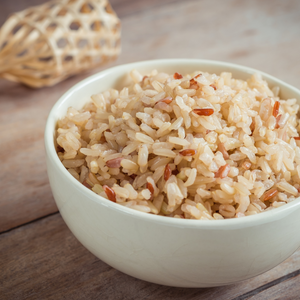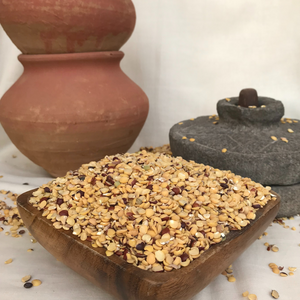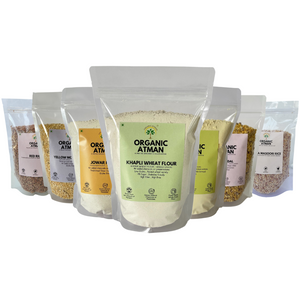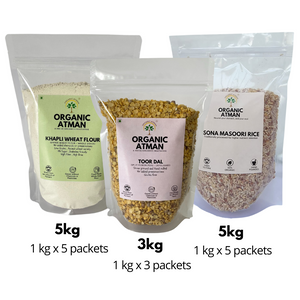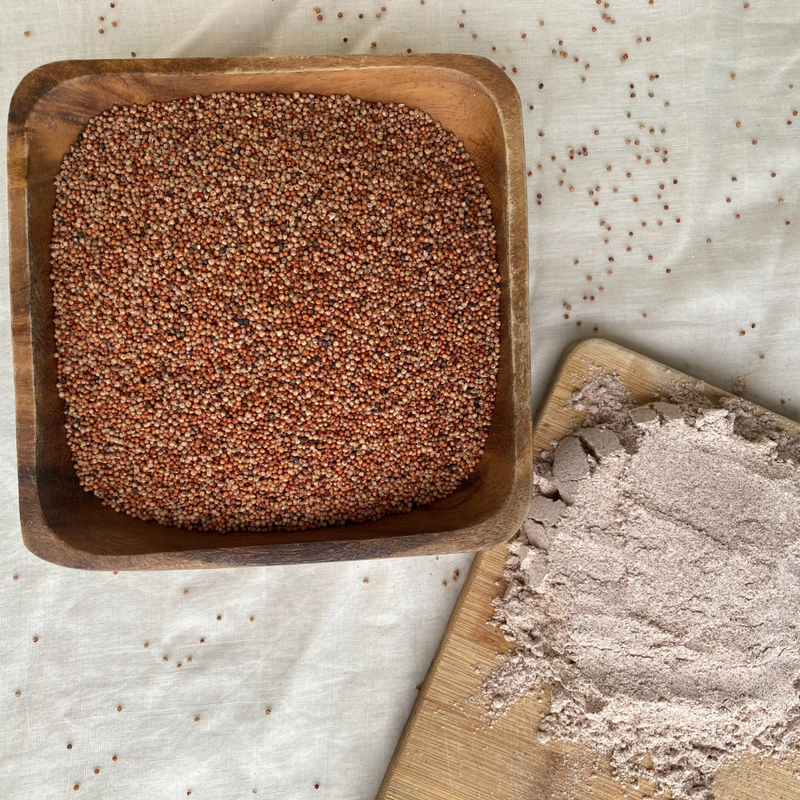Maintaining a healthy diet and understanding your food is tough, right? Need help with a balanced, gluten-sensitive diet? Sounds tricky. Ever tried khapli wheat?
In this day and age, ancient grains are gaining popularity. Khapli wheat, also known as emmer wheat, is a real gem for its health perks and rich history. Khapli gehu is among the oldest grains ever farmed, fuelling civilisations for millennia. Add some khapli gehu atta, or khapli wheat flour, to your dishes for a healthy twist! Curious why? Let's explore the awesome benefits of this ancient-turned-super grain.
1. Healthy for the Heart!!
When we dig into ancient wheat types, it unveils thrilling heart-health perks. Studies suggest that adding Khapli wheat can be a boon to:
- Lowers the bad cholesterol
- Lower triglycerides
- Improve blood pressure management
- Decrease inflammatory markers associated with heart disease
Khapli wheat offers cardiovascular benefits from antioxidants, fiber, and plant compounds modern wheat lacks.

2. Great for Diabetic Patients
Khapli wheat, with its lower glycemic index, is a top choice for folks dealing with diabetes or insulin resistance. Emmer wheat's complex carb structure and high fiber content team up to slow down glucose absorption, keeping blood sugar spikes at bay!
Several studies hint that ancient wheat types like khapli could boost insulin sensitivity and help manage blood sugar in the long run when enjoyed as part of a balanced diet

3. Packed with Zinc, Iron, Magnesium
Khapli wheat is here to steal the show with its top-notch nutritional density! Packed with protein, this ancient grain boasts a more complete amino acid profile than regular wheat. Full of essential minerals like zinc, iron, magnesium, phosphorus, and calcium—nutrients that are a must for immune function and bone health.
Moreover, Khapli wheat is packed with antioxidants, especially carotenoids like lutein that give your eyes a boost and might even calm inflammation. This nutritious edge means every bite of Khapli wheat flour is a health champion!
4. Lower Gluten Content
Even though Khapli wheat has gluten, its gluten content is 5-6%, quite different from today's wheat types. General wheat contains 13% gluten. The ancient gluten style of Khapli wheat is usually easier on those with slight gluten sensitivities (but remember, people with coeliac disease should steer clear).
Ancient wheat like Khapli may cause less inflammation in the digestive tract than modern wheat, leading to better digestion for many.
5. Easy to Digest
The high fiber content in Khapli wheat—much greater than in modern wheat types—supports digestive health in various ways. This fiber encourages regular bowel movements and nourishes beneficial gut bacteria, promoting a healthy microbiome.
Improving your gut health is key for boosting immune function, enhancing mood, and reducing inflammation in your body. Opting for Khapli wheat supports your digestive system with each bite.

6. Keeps your sugar levels in check
Khapli wheat has a lower glycaemic index than modern wheat, so it's like a slow dance for your blood sugar levels. Ideal for steady energy levels & blood sugar control!
Khapli wheat's complex carbs, fiber, and protein prevent blood sugar spikes and crashes, avoiding fatigue and cravings throughout the day.
7. Amped-up Taste and Cooking Flexibility
Khapli wheat brings a unique flair with its nutty, slightly sweet flavour, giving your dishes a personality boost! Boost your artisanal breads, traditional flatbreads, pasta, pancakes, and desserts with this rich, complex taste profile!
Khapli wheat's robust flavour means less need for fats and sugars in recipes, letting its natural goodness shine!

8. Green and Heritage Preservation
Choosing Khapli wheat promotes biodiversity and sustainable agriculture with reduced environmental impact and genetic diversity preservation. By including this ancient grain in your diet, you're not only nourishing your body but also contributing to the preservation of agricultural heritage and backing more sustainable food systems.
Incorporating Khapli Wheat Into Your Diet
Switching to Khapli wheat is surprisingly easy. Khapli wheat flour works well in most recipes that specify whole wheat flour, although you might need to tweak the liquid amounts slightly as Khapli flour can soak up more moisture. Use Khapli flour in your recipes, gradually increasing the amount as you get familiar with this nutritious ancient grain.
Popular uses for Khapli wheat flour include
- Traditional Indian flatbreads like chapatis and parathas
- Artisanal sourdough and rustic breads
- Wholesome pancakes and waffles
- Pasta making
- Cookies and biscuits with rich, complex flavor
Where can you buy Khapli wheat and Khapli wheat atta/flour?
Khapli wheat and Khapli wheat flour are both commonly available online and at retail locations. For those seeking a reliable source, Organic Atman provides high-quality Khapli wheat and Khapli wheat Atta/flour that has been minimally treated to keep its natural flavour and nutritional value.
We track the journey of every Khapli wheat grain from farmer to us and ensure that you receive freshly milled Khapli atta at your door.
A Final Note of Caution
Despite its benefits, Khapli wheat may not be suitable for everyone. It's important for individuals with celiac disease to steer clear of it due to its gluten content. Those with wheat allergies, gluten sensitivity, or IBS should also exercise caution. If you have health concerns or food sensitivities, it's best to consult your doctor before trying Khapli.
Boost your gut health by choosing Khapli wheat over regular options! Your digestive system will thank you!
At Organic Atman


We consider food to be the foundation of wellness rather than only fuel. Our journey started when Vedant Godbole, our founder, used holistic diet to overcome an autoimmune illness. This personal change motivated an effort to provide something better when harmful practices in traditional farming were discovered.
Organic Atman is a farm-to-fork company committed to providing wholesome, toxin-free food that is based in tradition and the goodness of nature. By prioritising transparency in all aspects of our operations, including sourcing and packaging, we are creating a conscious community that values honesty, authenticity, and good nutrition. Our objective is to make organic food available to everyone while promoting sustainable farming through the use of ancient grains, traditional processing techniques, and clean ingredients.






